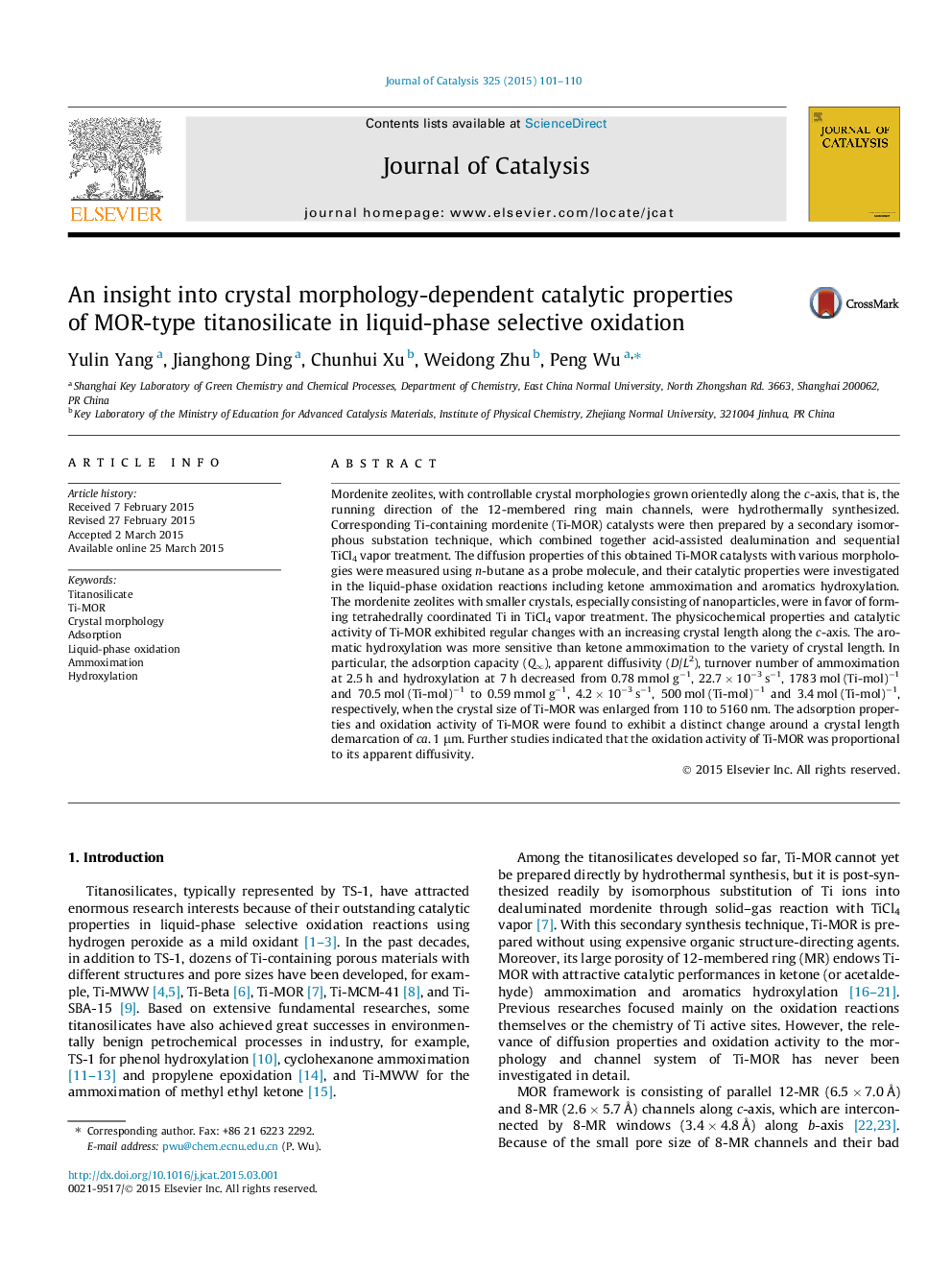| Article ID | Journal | Published Year | Pages | File Type |
|---|---|---|---|---|
| 60893 | Journal of Catalysis | 2015 | 10 Pages |
•A series of Ti-MOR with different degrees of oriented crystal growth along the c-axis were prepared.•Smaller crystals, especially nanoparticles, are in favor of forming the tetrahedral Ti species in Ti-MOR.•The aromatic hydroxylation is more sensitive than ketone ammoximation to the crystal length of Ti-MOR.•The crystal length of ca. 1 μm is a demarcation line governing the adsorption and oxidation properties of Ti-MOR.•The oxidation activity of Ti-MOR depended linearly on the apparent diffusivity.
Mordenite zeolites, with controllable crystal morphologies grown orientedly along the c-axis, that is, the running direction of the 12-membered ring main channels, were hydrothermally synthesized. Corresponding Ti-containing mordenite (Ti-MOR) catalysts were then prepared by a secondary isomorphous substation technique, which combined together acid-assisted dealumination and sequential TiCl4 vapor treatment. The diffusion properties of this obtained Ti-MOR catalysts with various morphologies were measured using n-butane as a probe molecule, and their catalytic properties were investigated in the liquid-phase oxidation reactions including ketone ammoximation and aromatics hydroxylation. The mordenite zeolites with smaller crystals, especially consisting of nanoparticles, were in favor of forming tetrahedrally coordinated Ti in TiCl4 vapor treatment. The physicochemical properties and catalytic activity of Ti-MOR exhibited regular changes with an increasing crystal length along the c-axis. The aromatic hydroxylation was more sensitive than ketone ammoximation to the variety of crystal length. In particular, the adsorption capacity (Q∞), apparent diffusivity (D/L2), turnover number of ammoximation at 2.5 h and hydroxylation at 7 h decreased from 0.78 mmol g−1, 22.7 × 10−3 s−1, 1783 mol (Ti-mol)−1 and 70.5 mol (Ti-mol)−1 to 0.59 mmol g−1, 4.2 × 10−3 s−1, 500 mol (Ti-mol)−1 and 3.4 mol (Ti-mol)−1, respectively, when the crystal size of Ti-MOR was enlarged from 110 to 5160 nm. The adsorption properties and oxidation activity of Ti-MOR were found to exhibit a distinct change around a crystal length demarcation of ca. 1 μm. Further studies indicated that the oxidation activity of Ti-MOR was proportional to its apparent diffusivity.
Graphical abstractFigure optionsDownload full-size imageDownload high-quality image (113 K)Download as PowerPoint slide
